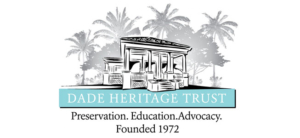CBS Miami, By Hank Tester. /
Flagler’s Palm Cottage offers a glimpse into the beginning of Miami’s future
MIAMI – Recently I was on assignment in Downtown Miami and I was looking for a location for a story we were producing.
I would up in Fort Dallas Park located behind the James L. Knight Center and right on the Miami River. I saw this wonderful old building, painted yellow, and I was pretty sure about what I was seeing but I wanted to make sure, so I called Dr. Paul George with the HistoryMiami Museum.
A few weeks later we met at the park.
“I was down here. I came into this park by mistake, but I looked up here and I saw this yellow building, saw the paint, and I wondered, does it have anything thing to do with Henry Flagler?” Hank Tester asked George.
“It absolutely does. He loved the color yellow. First of all, he built that building, his guys did, in 1897,” said George.
American industrialist Henry Flagler, who brought the railroad to Miami, also built the Royal Palm Hotel at the mouth of the Miami River, it was painted a bright yellow.
“I looked at a report from 1983 and it showed this building or buildings like it right downtown, all lined up in a row by the hotel,” Tester told George.
It turns out the yellow house in the park was one of at least thirty constructed for people working on the construction of the Royal Palm Hotel, which was built along what is now SE 2nd Street. Historical reports said that Flagler said he did not his workers living in tents so the houses were constructed. The rent was $22 a month.
The yellow house was moved to Fort Dallas Park in the 1980s, it is often referred to as “The Palm Cottage” or “The Flagler Worker’s Home.” It is currently behind a temporary fence, padlocked, and in disrepair. The Dade Pine building with great bones, at one time the location of a failed restaurant, has been waiting for years for some type of rescue.
“Why is it important for the people of Miami to know about that particular building?” Tester asked George.
“We have so little left from the beginning and this is the beginning of Miami, the city that today is world renowned begins a year before this building was built and this building was built right in the core of that future city of Miami,” he replied.
George said that the weathered yellow house is the only building left in the downtown area from the Flagler era.
The City of Miami Recreation and Parks Administers the site at Fort Dallas Park. When I asked about its current status and plans for the future the response was “no comment at this time.”
Christine Rupp is the Executive Director of the Dade Historic Trust.
“We engaged the City of Miami. We engaged area stakeholders, downtown residents, the Flagler Business Improvement District, and landscape architects, they had a plan for the building but are frustrated there is no progress,” said Rupp.
She said there is money for restoration.
“The building itself could be an excellent visitors center, a gallery, it could be a place for bike and walking tours to start,” said Rupp.
“I’ve been familiar with this building now for over 40 years and just kind of waiting for something good to happen to it,” said George.
Meanwhile, the Flagler Worker’s House continues to deteriorate in the shadow of the ongoing massive development in Downtown Miami.
